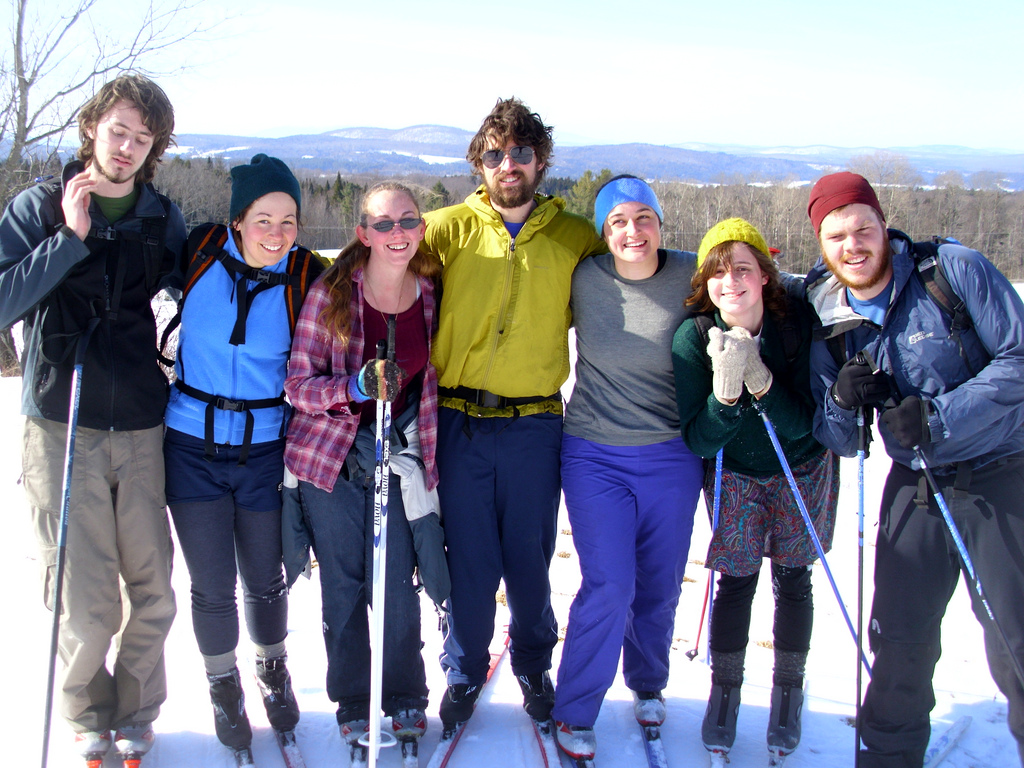
Try out cross-country skiing during your alpine college ski holidays to save money, get a good workout, and experience family fun at a less-crowded ski area.
Thinking of taking the family on ski holidays? Why not try a day or two of cross-country skiing so your family can be together on quiet trails, get good exercise, and have some affordable family fun?
Cross-country ski centers are typically located close to alpine ski areas, which makes it is easy to do both kinds of skiing on the holidays. Adding cross-country skiing to your itinerary will save you money, too.
Trail passes and rentals run around $20 each with discounts afternoon for a half-day. Working with students as an essay writer, I have got to know that some alpine ski areas have affiliated cross-country ski centers, where you can ski free via your alpine pass. If you are feeling ambitious, you can ski both styles on the same day. An hour or two on the cross-country trails is all that you need. Having to ski up the hills is a good workout.
Easy to Get Started on Cross-Country Skis
Hop in the classic tracks and stride along. You’ll probably see some people skating on their skis. If you’re already comfortable skating on the flat parts of the alpine ski areas, you can give skating a try at the cross-country ski area. You’ll need to rent skate skis and be patient. Skating is harder than it looks.
On your first outings, you’ll want to stick to trails that aren’t too far from the ski center. Trails that make small loops are great. If you want to ski more, try cruising around near the lodge. Add a game of tag on skis for more family fun or find a short hill to ski down. Granted you have to ski up to come down, but the thrill of the downhill is worth the climb. Kids will climb up over and over again.
Here are some tips to help make cross-country skiing fun for your family.
Dress in Light Layers
The beginning of a ski is often cold, but once you get climbing a hill in the woods, you’ll warm-up. If your kids will be moving slowly, you’ll need a warm coat.
Pack Snacks
Choose those that are filling and easy to eat like fig bars, chewy granola bars, or cereal bars. A little water is good for anyone that gets thirsty, though the water may freeze if you don’t have an insulated carrier. Many kids usually need food more than water.
Backpack
Wear a small backpack, waist pack, or hydration pack with room for storage. You can put the clothes you don’t need at the moment, and snacks in here. You want to start with a pack that has room for more cargo. Make sure a parent is the pack carrier.
Leave the Helmet Behind
Helmets aren’t necessary for the Nordic trails. Skiers aren’t zigzagging all over like at the alpine slopes and the speeds on the downhill aren’t that fast. If you’re worried about someone going off the trail on a hill, simply follow the rule to sit down to come to a quick stop.
Choosing a Pair of Cross-Country Skis
Every student wants to save money and buy great equipment. In general, these two notions are impossible to combine. In this case, the cheap essay writing service prepared the following solutions:
- Waxable or Waxless Classic Skis: Classic cross-country skiers are sold as either waxable or waxless. Non wax models are easier to take care of and more convenient than waxable skis. Waxable skis are the better choice for experienced skiers and racers since they tend to be faster and glide better than the waxless model. Waxable skis do take extra care, knowledge, and preparation so it is a good idea for beginners to start on waxless skis.
- Cross-Country Ski Length: An experienced salesperson can aid in selecting the best length ski. Bodyweight is the primary determinant of ski size, but the individual ability and terrain characteristics help contribute to the decision as well.
- Cross-Country Ski Width: Cross-Country skis come in a variety of widths. If looking to ski groomed and packed trails, narrower skiers are the better option. Narrower skis minimize drag and make gliding easier and faster. Wider skis are ideal for those interested in taking their skis off-trail, as they are best in a variety of snow conditions. Wider skis provide more stability and flotation in sno
- Women’s Specific Models: Some cross-country skis come in women-specific models. Women-specific skis tend to be lighter weight, have a softer flex pattern, and other design features that conform to a woman’s lower center of gravity.
Choosing Cross-Country Ski Boots
Boots just may be the most important purchase. It is important to choose boots that are comfortable and hold the heel snugly in place. For example, the sports essay writers stated that Improperly fit, loose boots will cause terrible blisters with the heel-raising action of the diagonal stride.
Boots vary in the amount of ankle support and stiffness:
- For groomed trail skiing, a more comfortable, flexible boot may be sufficient.
- For skiing in a variety of terrain including off-trail touring, a boot with ankle support and less flexibility is recommended.
Choosing Cross-Country Bindings
There are two types of cross-country ski bindings, the Solomon Nordic System (SNS) and the New Nordic Norm (NNN). The boot that you select determines which binding system you will need.
It is often a good idea to rent several different brands and styles of skis before making your purchase. Many Nordic centers and outdoor retailers rent skis or demo the latest models. Try out different types of skis until you find the ones that work the best.
End the outing with a cup of cocoa by the fire in the lodge.
If you want quaint lodging right beside the cross country trails, consider staying at a cross country ski resort.



